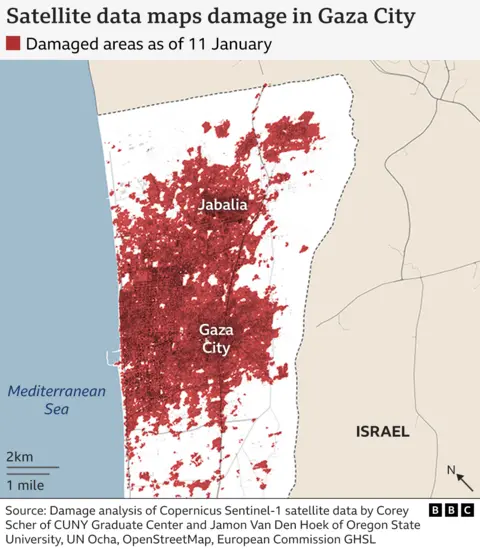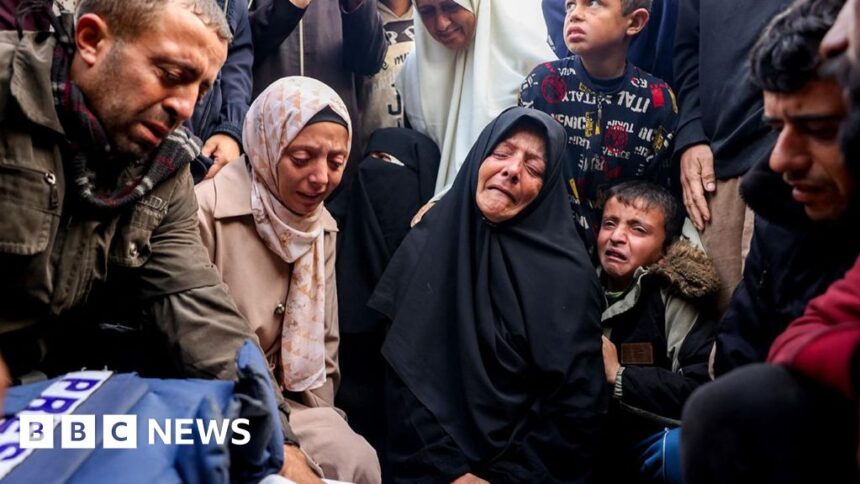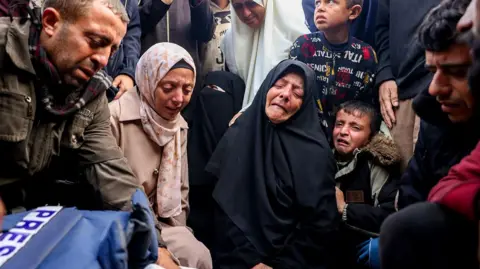 AFP
AFPIsraeli airstrikes continue on Gaza ahead of the ceasefire and hostage agreement with Hamas, which comes into force on Sunday, subject to approval by the Israeli cabinet.
The strikes killed 62 people overnight, following the announcement of the deal, the Hamas-run health ministry in Gaza reported.
Gaza’s civil defense agency gave the figure, saying at least 73 people had been killed and hundreds injured.
The victims include 12 people who lived in a residential building in the Sheikh Radwan neighborhood of Gaza City, the Health Ministry said.
The Israel Defense Forces initially said “a fallen projectile” had been identified in southern Israel on Thursday, but later said it had been misidentified.
Israel has previously launched airstrikes in the run-up to ceasefire agreements coming into effect, most recently in Lebanon, where intense bombardment struck the capital, Beirut, just hours before the ceasefire in November.
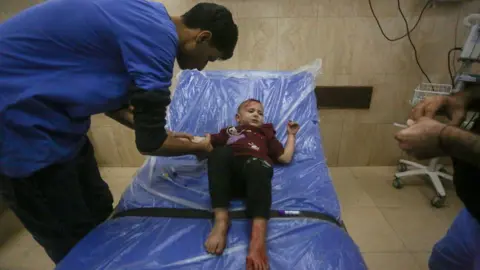 Getty Images
Getty ImagesIsraeli Prime Minister Benjamin Netanyahu was should ratify the Gaza agreement ceasefire agreement in Parliament on Thursday, but his office says Hamas has “reneged” on parts of the deal, causing a “last-minute crisis.”
He adds that the cabinet will not meet until Hamas has accepted “all elements of the agreement.”
A senior Hamas official told the BBC that his movement was committed to the agreement announced by the mediators and that the head of its delegation, Khalil al-Hayya, had officially informed Qatar and Egypt of his approval of all the terms of the agreement.
Two hard-right ministers, Finance Minister Bezalel Smotrich and National Security Minister Itamar Ben Gvir, have long threatened to leave the governing coalition if the ceasefire is maintained.
That could trigger new elections in Israel, but their resignations will not block the deal if Netanyahu wants, observers say.
Qatar’s prime minister, who mediated the negotiations, called for “calm” on both sides before the start of the first six-week phase of the ceasefire agreement.
This will see 33 hostages – including women, children and the elderly – exchanged for Palestinian prisoners in Israeli jails.
Israeli forces will also withdraw eastward, away from densely populated areas of Gaza.
Displaced Palestinians will be allowed to begin returning to their homes and hundreds of humanitarian trucks will finally be allowed to enter the territory each day.
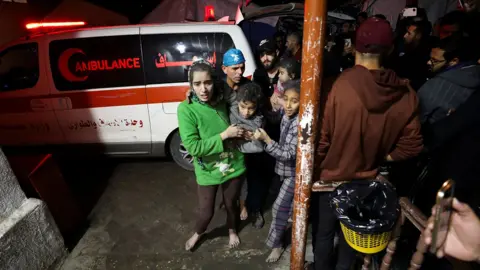 Reuters
ReutersNegotiations for the second phase – which should see the release of the remaining hostages, a complete withdrawal of Israeli troops and a return to “lasting calm” – will begin on the 16th day.
The third and final step will involve returning the bodies of the remaining hostages and rebuilding Gaza – which could take years.
Achim Steiner of the United Nations Development Program told the BBC’s Newsday program that rebuilding Gaza would be a huge challenge, given the massive destruction inflicted by the war.
He said 40 million tonnes of “toxic” rubble had to be removed before Gazans could return to where their homes were.
“This is a very complex undertaking that we now face,” he said.
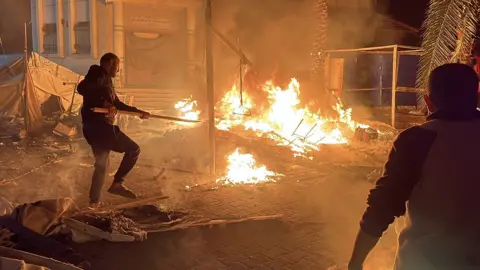 Getty Images
Getty ImagesIsrael launched a campaign to destroy Hamas – which is banned as a terrorist organization by Israel, the United States and others – in response to an unprecedented cross-border attack on October 7, 2023, in which around 1,200 people were killed. were killed and 251 others taken hostage. .
Since then, more than 46,700 people have been killed in Gaza, according to the Hamas-run territory’s health ministry.
Most of the 2.3 million residents have also been displaced, destruction is widespread and there are severe shortages of food, fuel, medicine and shelter, while humanitarian agencies struggle to provide aid. help to those who need it.
Israel says 94 of the hostages are still held by Hamas, 34 of whom are presumed dead. Additionally, four Israelis were kidnapped before the war, two of whom died.
